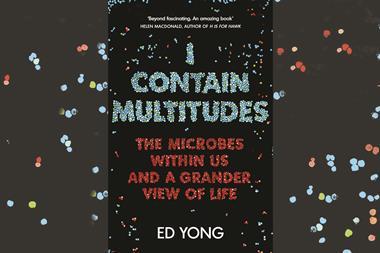Ed Yong
Bodley Head
2016 | 354pp | £20.00
ISBN 9781847923288
Buy this book from Amazon.co.uk
Biology was my weakest science at school and the one I took the least interest in. Recently, however, I’ve grown concerned about antimicrobial resistance, which has piqued my interest in the complex life forms that live within and around us. Luckily, Ed Yong’s new book, I contain multitudes, is a whistle-stop tour of the microbial world for the non-expert. Yong has won numerous awards for his science writing, and the book is already a New York Times bestseller – it doesn’t take long to realise why.
Who knew animal–microbe partnerships were so fascinating? Yong explores the relationship of animals and microbes so comprehensively it will make you look at the world in a completely different way – maybe like a microbiologist. He tells us that everything is in symbiosis, microbes dictate the health of coral reefs or control diseases, and this incredibly vast microscopic world can help to protect us. In the western world we are obsessed with cleanliness and the removal of the ‘99.9% of bacteria’, as the cleaning adverts regularly espouse, often not recognising their vital contribution to the animal kingdom. After all, they have been around for 3.5 billion years and paved the way for more complex life, including ourselves.
Perhaps the most captivating story was of how we can infect mosquitoes with bacteria to stop the spread of dengue fever, which involves altering their microbial composition and releasing the mosquitoes into the environment. The bacteria spread amongst the mosquito community until the only insects left are unable to transmit dengue to humans. This was a massive project, which has already succeeded in Australia and is now expanding to other countries. As they gradually become accepted in the medical community, these methods have also been used to cure chronic diarrhoea. Who knows what it could do in the future? Microbes may control the animal kingdom, but, in some cases, humans can use this to their advantage.
Yong takes us on a fascinating journey into the microbial world, using capturing prose, anecdotes and metaphors to help explain this complex and exciting field of science. It is by no means an easy ride (if you can keep up with all of the latin names you’re doing well), but the commitment is more than worth it.













No comments yet